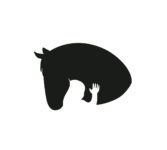Horses are used as a tool for emotional growth and learning to help adults and children with autism, mental health and behavioural problems, such as mood disorders, addictive behaviours and communication difficulties.
Breaking the negative cycle in children with autism
Children who live with the experience of autism have an overactive amygdala, this is the part of the brain responsible for detecting and responding to threats. The amygdala releases the stress hormone cortisol. This in turn is responsible for our flight, fight or freeze response. The effect of this is to narrow our attention span because all the brain effort is going into flight, fight or freeze. This narrowed attention span means there is no brain power left to learn.
The aim of the sessions at Pony Pals Wrekin is to break this negative cycle and reduce the production of cortisol.
Equine assisted therapy can promote a positive cycle
The answer to breaking the negative cycle is oxytocin. This is the feel good hormone and it counteracts cortisol. The production of oxytocin is stimulated through rhythmic movements, deep pressure and laughter. Stimuli through movement does three things.
- It stimulates the vestibular system this improves balance and attention.
- Movement also stimulates the cerebellum and the production of purkinje cells. A deficiency in purkinje cells is one of the most common deficiencies in the autistic brain. Increased purkinje cells = more connections between the cerebellum and the pre-frontal cortex. The pre-frontal cortex is responsible for emotional regulation and reasoning.
- Movement also increases the connections between the pre-frontal cortex and the amygdala which helps to calm down the amygdala.
Our aim is to replace the negative cycle with the positive cycle, allowing learning to happen!
